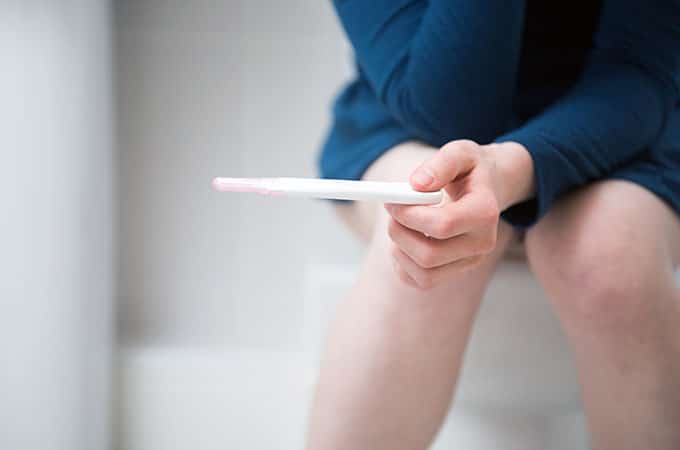It is a cruel experience waiting month after month for a positive pregnancy test only to be met with disappointment and frustration. While infertility is defined as the inability to conceive after having regular, unprotected intercourse for 1 year, it is considered “normal” for an average woman under 35 years of age to try to conceive for 1 year before a pregnancy may occur. But for those individuals who are older than 35, that timeframe for conception becomes shorter. So what happens if I have not conceived during this timeframe based on my age? Why am I not getting pregnant?

US News turned to fertility expert, board certified reproductive endocrinologist, Dr. Eric Levens of SGF’s Fairfax, Virginia office to discuss some of the causes of infertility.
1). Maternal Age
Maternal age is the greatest predictor of a woman’s chances of achieving a pregnancy. Starting in a woman’s late 20s, the probability of pregnancy begins to decline. This decline accelerates as a woman reaches ages 35-40 years of age. The principle reasons why fertility declines so sharply during this time are due to a decline in the number of available eggs and the increasing rates of genetic abnormalities that occur as eggs mature. The net result is a decline in the overall pregnancy chances and an increase in the rate of miscarriage. Remarkably, the ability to successfully carry a pregnancy does not change much over the course of a woman’s life.
2). Smoking
Most people know that smoking can have a negative effect on their health including the development of emphysema and lung cancer. But many do not realize this includes a detrimental impact on their reproductive potential. Compared to non-smokers, smokers on average experience a longer time to conception and higher risk of infertility due to a direct impact of smoking on the quantity and quality of eggs. Moreover there is a dose dependency as the greater the daily quantity of cigarettes smoked, the greater the impact on one’s fertility. Smoking also increases the rate of follicular depletion resulting in an earlier average age of menopause.
3). Body Weight
A woman’s body mass index (BMI) is strongly connected to her fertility potential. While not every woman who has a BMI that is too high or too low will have difficulty conceiving, there are many who do. Women who are both overweight and underweight have a greater risk of ovulatory dysfunction represented by irregular menstrual cycles. As BMI increases, there is an increasing risk of insulin resistance that disrupts follicle development and elevates levels of testosterone, making ovulation and conception difficult.
While being overweight has an impact on fertility, an appropriate amount of body weight is actually necessary for proper reproductive function. “When one’s BMI is too low, the body sees this as stress and tends to preserve oneself at the expense of one’s fertility,” says Dr. Levens. “Long distance runners, ballet dancers, and women with eating disorders are among those who may need to increase their body weight before trying to get pregnant,” Dr. Levens adds. If you aren’t having regular menstrual cycles, this is an indication to seek help quickly, well before the 6-12 month timeframe discussed above.
4). Medical Conditions
Accounting for nearly one-third of all infertility diagnoses in women, polycystic ovary syndrome, or PCOS, is the most common ovulatory disorder in women of reproductive age. Polycystic ovary syndrome (PCOS) is caused by hormonal dysfunction that limits or prevents ovulation. Endometriosis is also a common cause of infertility in which endometrial tissue (tissue that lines the inside of the uterus) grows outside the uterus. This type of infertility can often go undiagnosed as many women don’t have noticeable symptoms.
5). It’s Not You
While infertility is generally perceived as a female issue, the reality is 40 to 50 percent of infertility is attributable to male factors. “There’s a fairly equal distribution between male and female factors,” Dr. Levens says. Erectile dysfunction, ejaculatory issues, and sperm production problems are some of the common (and often treatable) culprits of male infertility. Because basic testing for these problems, a semen analysis, is relatively simple and inexpensive, it should be performed as part of a couple’s routine testing to determine the underlying cause(s) of the infertility.
6). Unexplained
There are three simple initial tests for fertility: semen analysis, bloodwork and ultrasound, and a hysterosalpingogram (HSG) that checks if your Fallopian tubes are open and functioning properly. If all of the testing comes back normal, you may have a diagnosis of unexplained infertility. This can be a very frustrating diagnosis as there is not an obvious “reason” for the infertility. “In the setting of unexplained infertility, there is often a knowable cause of infertility, it just cannot be seen. Sperm and eggs unite in the Fallopian tube and many times the explanation for unexplained infertility involves poor fertilization or poor embryo development. The problem is that these events occur within a women’s body. Often unexplained infertility is explained when these events are witnessed using tools like in vitro fertilization (IVF),” Dr. Levens says.
If you have been trying to conceive and are having no luck, seek counsel early with a fertility specialist. When it comes to fertility, time is of the essence. Don’t wait any longer to seek the help you need. Treatments exist to help nearly everyone conceive.
If you’ve been wondering why you are not getting pregnant and would like to learn more, please call our New Patient Center at 1-877-971-7755 or click here to schedule an appointment.






